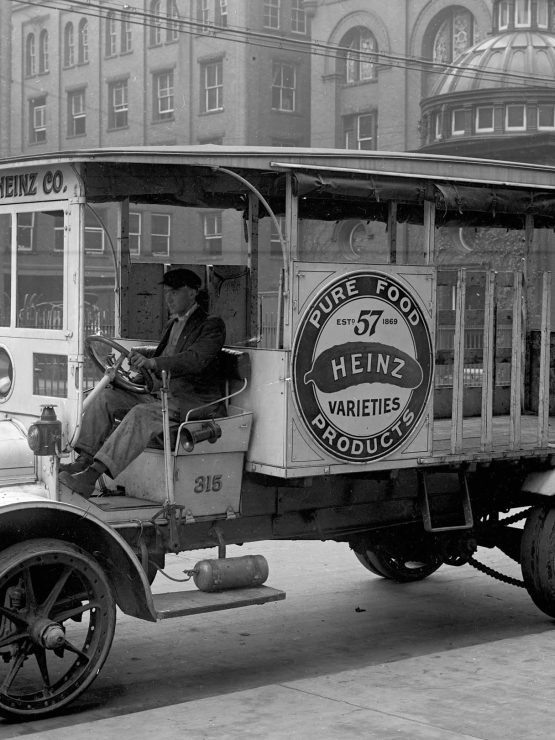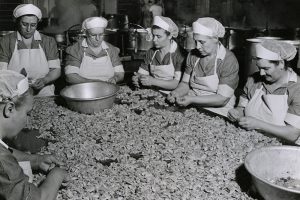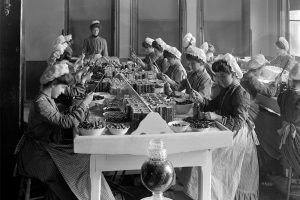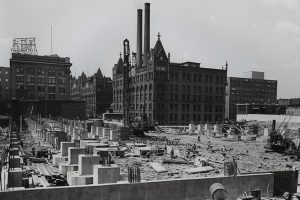
H.J. Heinz Company
The H. J. Heinz Company Photographs depict the company’s Pittsburgh plant and its employees, products, displays, and equipment. The photographs, which date chiefly between 1940 and 1975, were created by the company’s Public Relations Department for internal use. The earliest images in the collection (1864-1920) depict interior and exterior views of the Heinz plant, including processing, canning, packaging and shipping facilities, stables, and employee leisure areas. Later images include photographs of Heinz Company executives, products and product displays from the 1950s and 60s. The collection comprises 128 boxes and albums containing gelatin dry plate and acetate negatives, photographic prints, albums and slides.
The H.J. Heinz Company Records include advertisements, label books, catalogs, recipe books, publications, scrapbooks, postcards, reports and correspondence. The records primarily document the company’s North American operations between 1920 and 1970. Chiefly represented are production and advertising initiatives, including the company’s participation in public exhibits such as the World’s Fair, and its prolific output of home use and cooking manuals aimed at various demographics. Publications in the collection also reflect the company’s interest in clean food production, employee health and safety, and participation in home front efforts during World War II. Minutes, reports and other documents regarding administration and sales during the early half of the twentieth century comprise the bulk of the collection’s operational records. A small amount of materials also document the F. & J. Heinz Company, the Heinz family, and overseas production. The collection comprises 29 boxes and shelf volumes.
About the H. J. Heinz Company
The H.J. Heinz Company was founded in 1869 by Henry John Heinz (1844-1919). The company began as a producer of horseradish in Sharpsburg, Pa. under the name of Anchor Pickle and Vinegar Works, and later Heinz & Noble. When the business failed after the Panic of 1873, Heinz reestablished the company with financial assistance from his brother John and cousin Frederick in 1876. Tomato ketchup was introduced to the F. &. J. Heinz Company product lines later that year, followed by apple butter, pepper sauce, mincemeat, and other preserves. In 1888, H.J. Heinz acquired controlling interest in F. & J. Heinz from John, thus instating the H.J. Heinz Company name. Production continued to expand in the 1890s, with new factories and branches built in Allegheny City, Iowa, New York and Michigan. By 1905, the company had incorporated and opened factories in England and Spain.
In addition to lobbying in favor of the Pure Food and Drug Act of 1906, H.J. Heinz pioneered efforts to maintain cleanliness and quality in food production. Heinz also took a notably progressive attitude towards employee management, offering use of a roof garden, dining rooms, library and other amenities to his employees. At his death in 1919, Heinz was succeeded by his son Howard as president of the company and its 6,500 employees, 25 branch factories, 85 salting stations, 53 tomato receiving stations, and 111 pickle receiving stations. Both Howard Heinz and his son, H.J. “Jack” Heinz II, retained H.J. Heinz’s commitment to food safety and employee management. The company went public in 1946 under the direction of Jack Heinz. The H.J. Heinz Company achieved its current status as a global corporation in the second half of the twentieth century, eventually reaching markets in over 200 countries.
Collection Highlights



